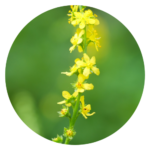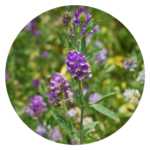Dosing Information
Herbs are powerful allies in promoting health and wellness, but knowing how to dose them safely is crucial, especially when it comes to children and pets. This blog post will explore general dosing guidelines for herbs, emphasizing the importance of caution and consultation with healthcare providers.
1. General Guidelines for Herbal Dosing
Dosing for herbs can vary based on several factors, including the specific herb, its preparation form (tea, tincture, capsule), the individual’s health status, and age. Here are some general dosing guidelines:
Teas and Infusions: Generally, 1 to 2 teaspoons of dried herbs per cup of boiling water is a standard recommendation. Steep for 5-15 minutes, depending on the herb.
Tinctures: A common dose for adults is 1/4 – 1 Teaspoon of a tincture taken 2-3 times per day. However, this can vary based on the herb’s potency and intended use.
Capsules/Tablets: The dosing for powdered herbs in capsules or tablets typically ranges from 250 mg to 1,000 mg, taken 1-3 times daily, depending on the specific herb and individual health needs.
2. Dosing for Children
When it comes to dosing herbs for children, caution is paramount. Do not give herbs to children under 3 years old without a qualified practitioner. The following guidelines can be helpful:
General Rule: A common guideline is to use one-quarter to one-half of the adult dose for children, depending on their age and weight. For example, if an adult dose is 500 mg, a child might take 125-250 mg.
Tinctures: When using tinctures for children, a diluted dose is often advised. For instance, a child might take 5-10 drops of tincture mixed in water, one to three times a day, depending on their age.
Consultation is Key: Always consult a pediatrician or a qualified herbalist before introducing herbs to a child’s regimen, especially for those under two years old.
3. Dosing for Pets
Herbal remedies can also benefit pets, but dosing varies significantly based on the type of animal and its weight. Here are some guidelines:
General Rule: A common dosing formula for dogs and cats is 1/4 of the human dose based on weight. For instance, if the standard dose for an herb is 1,000 mg for humans, a 20-pound dog might receive approximately 100-200 mg.
Form of Herbs: For pets, tinctures are often diluted before administration. A typical dose might be 5-10 drops for small pets and up to 20-30 drops for larger animals.
Consult a Vet: Always consult a veterinarian, especially one familiar with herbal medicine, before giving herbs to pets. Some herbs can be toxic to certain animals.
4. Key Considerations for Safe Herbal Use
Quality Matters: Always choose high-quality herbal products from reputable sources to ensure safety and efficacy.
Start Low and Go Slow: When introducing a new herb, it’s wise to start with a lower dose and gradually increase it as needed while monitoring for any adverse reactions.
Listen to Your Body: Each individual is unique, so it’s essential to pay attention to how you or your child responds to an herb and adjust accordingly.
Conclusion
Understanding how to properly dose herbs is crucial for safe and effective use. Whether you’re considering herbs for yourself, your children, or your pets, always consult with a healthcare professional or a qualified herbalist. This ensures that you’re using herbs safely and effectively, allowing you to enjoy the many benefits they offer.
For more detailed information about the different ways to take herbs, consider taking a course at the HomeGrown Herbalist Online School of Botanical Medicine.




